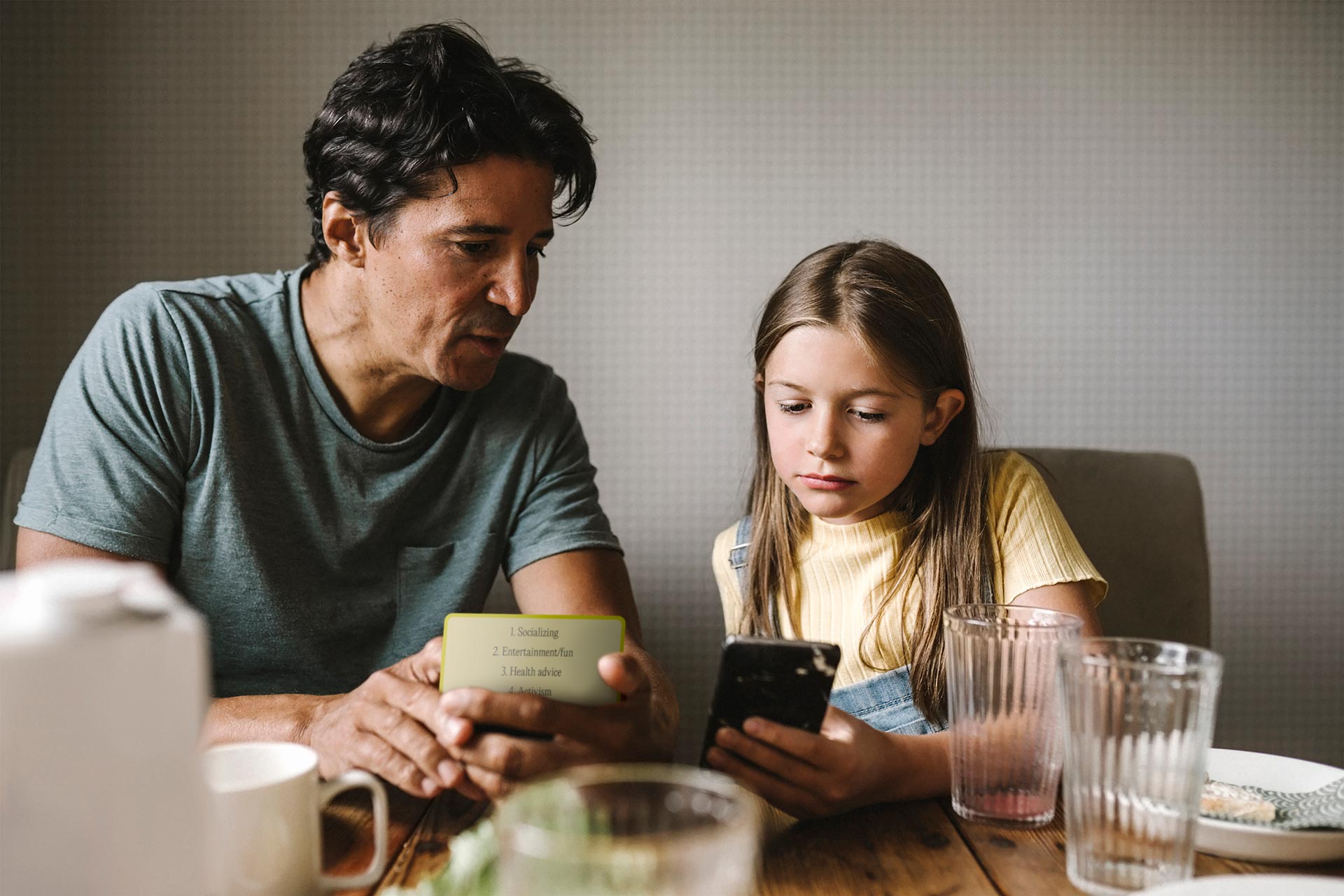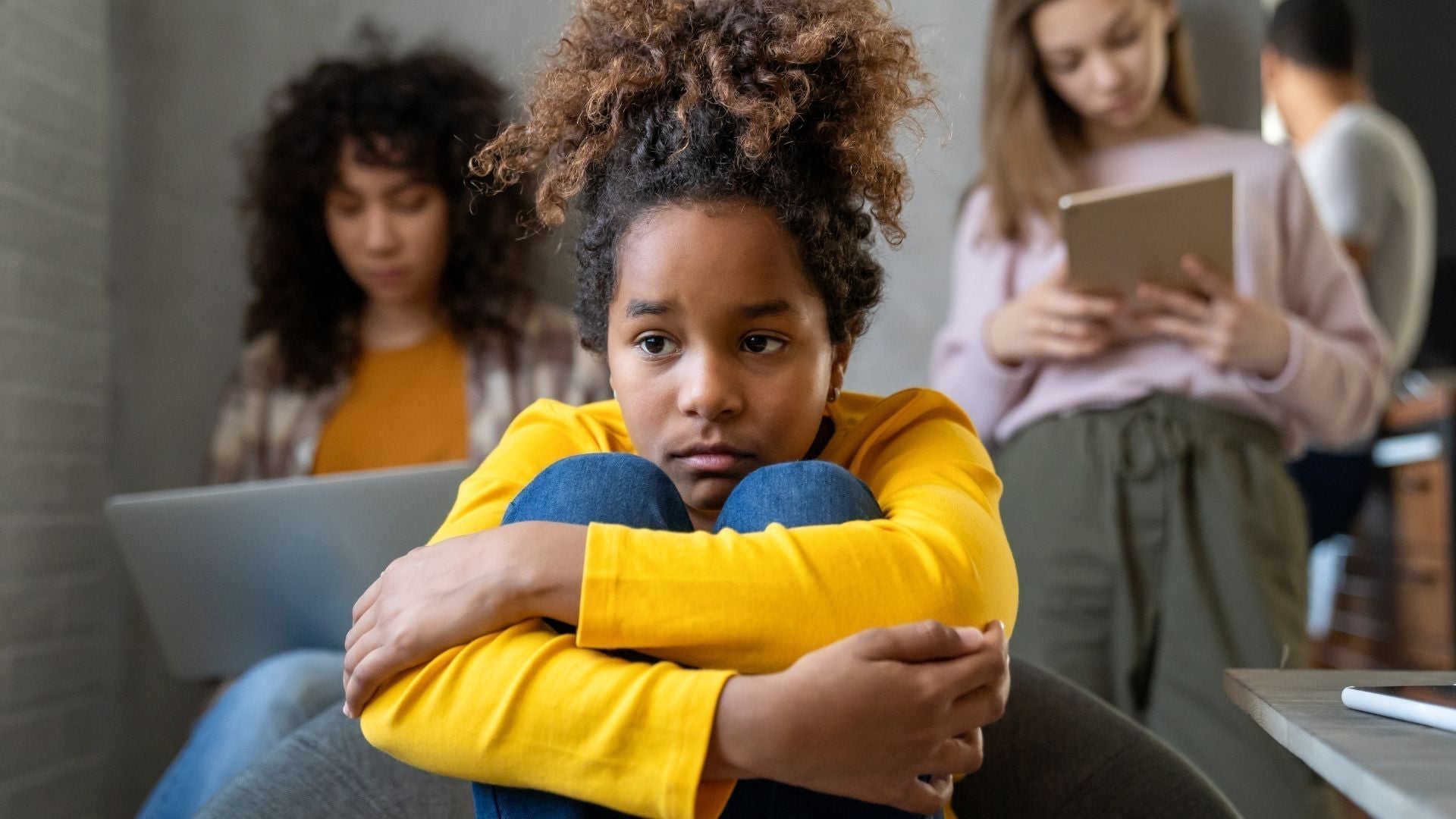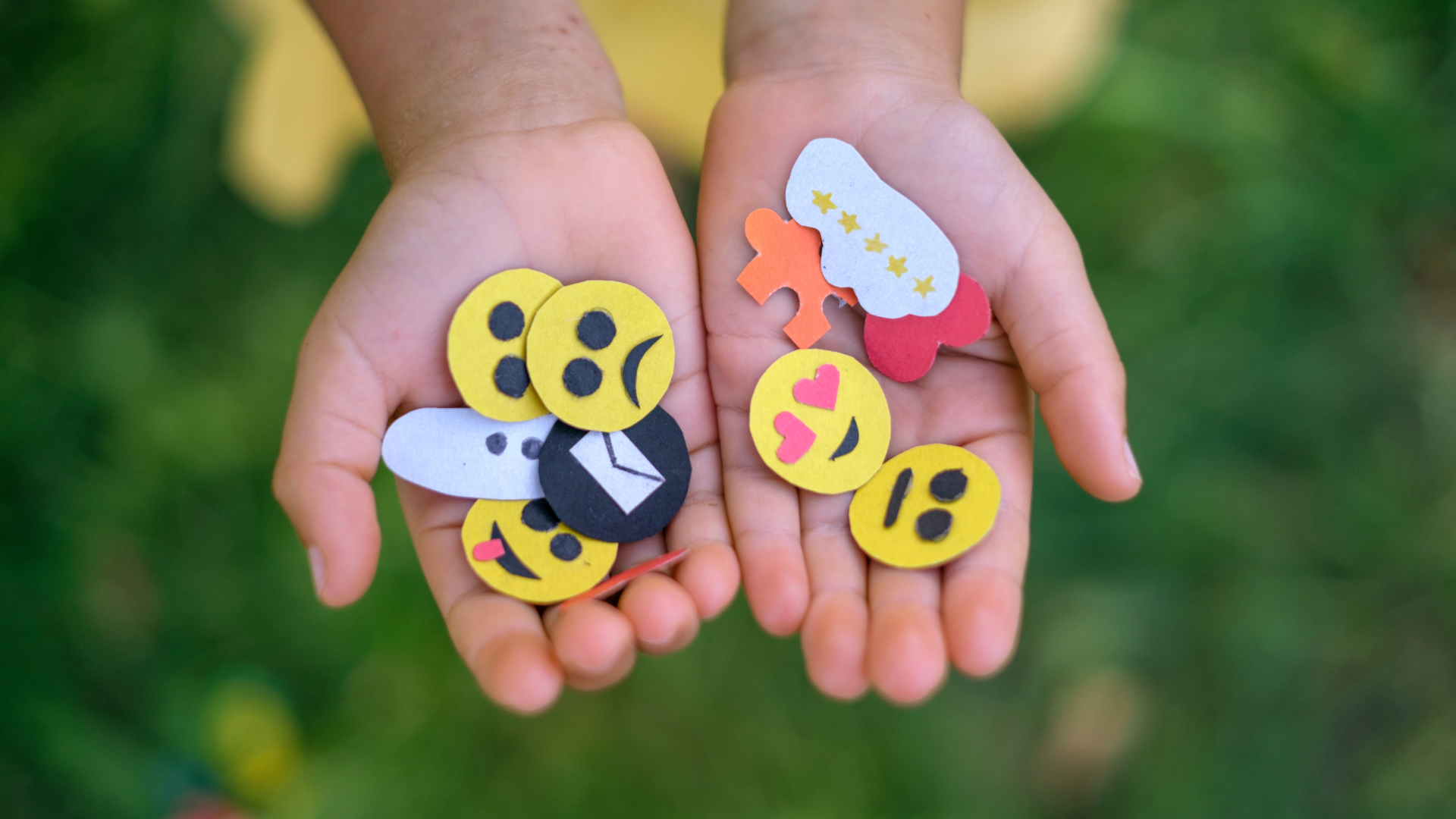Children today are growing up in a world where connection and attention often look the same. A flood of likes, comments, and followers can make it easy for kids to confuse social approval with genuine friendship. The challenge for parents is helping them understand that feeling accepted is not the same as being truly known or cared for.
Behind every notification is a small moment of validation that lights up the brain. It feels good in the moment, but it fades quickly. True friendship feels different. It provides comfort, belonging, and trust that last far longer than a “heart” on a post.
Helping kids tell the difference is one of the most valuable lessons we can teach. Real connection grows through shared time, listening, and empathy. Those qualities aren’t built through screens but through experiences that make children feel seen and safe.

Key takeaways:
- Children often confuse online validation with genuine friendship due to social media’s focus on likes and visibility.
- Real friendships strengthen empathy, trust, and emotional safety through shared experiences and consistent, caring communication.
- Parental modeling of empathy and balanced technology use teaches kids how to build healthy, lasting relationships.
- Guiding children to reflect on their feelings and interactions helps them value connection over comparison in digital spaces.
Understanding the digital friendship paradox
The shift from companionship to comparison
There was a time when friendship meant sitting close, sharing secrets, and laughing about small things that didn’t matter to anyone else. For many kids now, it means checking who viewed their story or how many people reacted to a post. It’s not that children have changed; it’s that the space where friendship happens has.
- When children scroll through their friends’ photos, they see a world that looks endlessly happy and polished. It’s easy for them to start comparing, wondering why their own lives don’t feel as exciting.
- Friendship slowly shifts from being about connection to being about presentation. Kids begin to measure closeness through attention rather than understanding.
- The quiet comfort of being accepted is replaced by the nervous energy of keeping up.
When we notice this happening, we can help our kids reflect gently. Asking things like, “Who makes you laugh when you’re together?” can bring the focus back to warmth and belonging instead of numbers.
The positive side of online connection
It’s also true that social media can connect children in beautiful ways. For some, it’s a bridge to distant family or a window into communities where they feel understood. When used with intention, digital spaces can nurture empathy and confidence.
- Staying in touch with friends who live far away can help children feel rooted, even when they move or change schools.
- Finding groups centered around art, books, or hobbies can give kids a sense of belonging and self-expression.
- Small acts of kindness online, sending encouragement, and commenting thoughtfully can show them that the positive impact of social media on friendships is real when care guides their actions.
The goal isn’t to remove technology, but to remind our children that kindness and connection matter more than constant visibility.
When digital spaces hurt more than they help
Even with their benefits, online spaces can easily cause confusion or hurt feelings. Without facial expressions or tone, a short message might sound cold, or a joke might come across as mean.
- Children may misread intentions and assume rejection where none was meant.
- Comparing their own lives to others’ “highlight reels” can make them feel inadequate.
- The endless loop of scrolling can replace real interaction with emotional noise.
These moments are where empathy matters most. Talking openly about how words and emotions travel online helps children slow down before reacting. You might draw ideas from empathy in digital spaces, which shows how awareness and compassion can keep online conversations kind and clear.
Why kids struggle to value friendship in a “like” culture

How social media shapes feelings
Children’s hearts are tender, and social media often touches them more deeply than they realize. Each like or reaction offers a tiny rush of happiness, but it fades quickly, leaving them wanting more.
- That quick burst of excitement can train their minds to seek approval again and again.
- Over time, this pattern can make them forget that the strongest happiness often comes from real connection.
- What they truly crave to feel understood, accepted, and close is something only real friendship can give.
Parents can help by asking curious, kind questions instead of offering warnings. “Do you feel happier after chatting with a friend or checking your phone?” often opens a heartfelt conversation that helps children see what truly fills them up.
The illusion of connection
It’s possible to have hundreds of online friends and still feel alone. Children can spend hours interacting online without experiencing the closeness that comes from real conversation or shared laughter.
Parents can help by creating spaces where kids experience connection that doesn’t rely on screens. Family dinners, walks, or board games help remind children what belonging feels like. These small, repeated experiences teach that real friendship is built through time spent together, not time spent online.
Teaching kids to build healthy friendships
Modeling connection at home
Children learn friendship by watching it. When parents show patience, empathy, and genuine interest in others, those lessons stick. Kids notice when we put down the phone to listen or when we make space for their feelings.
Small rituals can nurture this:
- Sharing one highlight from the day at dinner
- Reading together before bed
- Spending short moments talking without distractions
These gestures teach that connection takes presence and attention. Over time, they help kids understand that healthy friendships for kids grow out of these same habits.
Defining what a good friendship feels like
Children sometimes need help putting words to what makes a friendship positive. Ask them what kindness looks like or what they value in a friend. Writing ideas down together can help them picture it.
|
Quality |
Healthy Friendship |
Follower-Type Friendship |
|
Communication |
Honest and consistent |
Based on reactions and trends |
|
Emotional safety |
Feels calm and respected |
Feels judged or competitive |
|
Reciprocity |
Support goes both ways |
One person always gives more |
|
Growth |
Builds empathy and understanding |
Focused on popularity or status |
When kids can recognize these patterns, they begin choosing relationships that make them feel secure instead of anxious.
Encouraging real-world friendships
Offline friendships remain the most powerful teachers of empathy. Encourage kids to spend time with friends through:
- Shared hobbies or team activities
- Neighborhood playdates
- Volunteering or creative projects
These experiences provide the balance needed for social media and friendships to stay healthy. Children can enjoy the benefits of being online while learning that the most meaningful connections still happen face to face.
Setting healthy boundaries with social media
When to introduce social media
Many families ask what age they should let their children start using social media outlets, and while there’s no single answer, readiness matters far more than age alone. A child might be ready when they:
- Show respect for others’ privacy
- Handle disappointment calmly
- Understand that online posts last forever
Introducing social media after these emotional skills are visible helps ensure they appreciate the importance of cherishing friendships before venturing into digital circles.
Monitoring with care
Monitoring your child’s social media can be both helpful and tricky. It offers protection but can also create tension if done secretly.
|
Helpful Approach |
Potential Challenge |
|
Keeps kids safe from harmful content |
Might feel like overstepping |
|
Helps parents spot online stress early |
Could lead to hiding or secrecy |
|
Opens conversations about respect |
Requires consistent communication |
The balance lies in openness. Instead of checking secretly, sit with your child and explore together what they see online. Shared curiosity builds trust and teaches awareness.
Staying involved without controlling
Having access to a child’s accounts can be a way to stay connected, not a form of control. Ask them to walk you through the platforms they use and the friends they follow. Listening with genuine interest helps them feel respected and more likely to share concerns.
As they grow older, gradually giving more privacy shows faith in their judgment while keeping communication open.

Creating family habits around screen time
Healthy limits feel natural when they’re created together. You might decide on:
- Screen-free mealtimes or bedrooms
- Short daily reflection moments like “What made you feel good online today?”
- Weekend breaks focused on creativity, outdoor play, or rest
These boundaries work best when both parents and children follow them. They encourage balance, emotional regulation, and awareness of how online interactions affect mood. Discussing communication challenges through misunderstanding online messages can make these reflections even more meaningful.
Friendship lessons for the digital generation
Practicing empathy online
Empathy helps children build friendships that feel safe and real, even in digital spaces. It’s what turns quick online exchanges into moments of understanding. When kids pause to think about how their words might make someone feel, they begin to see the person behind the screen.
You can nurture this awareness through small, calm conversations woven into daily life:
- Talk about feelings after online moments. If your child reads a message that makes them smile or one that feels off, gently ask what stood out and why.
- Reflect together on how others might have felt. Questions like “How do you think your friend felt reading that?” help children see beyond their own perspective.
- Encourage small pauses before sending messages. Even a short breath before replying teaches mindfulness and care.
- Notice positive interactions too. Celebrate when your child comforts a friend online or shows support. It helps them feel the value of empathy firsthand.
When empathy becomes part of a child’s rhythm online, it changes how they engage. Messages become more thoughtful, conversations more considerate. Over time, they begin to understand that kindness doesn’t depend on where they are, it’s something they carry with them, both on and offline.
Distinguishing validation from value
Learning the difference between being validated and being valued can change how children see friendship entirely. One is about how others see them; the other is about how they feel in another person’s presence.
- Validation is fleeting. It comes from likes, views, and short bursts of attention. It feels exciting but doesn’t last.
- Value is lasting. It grows when a friend listens, remembers something important, or shows up on a hard day.
- Kids sometimes confuse the two, believing that more visibility means more love. It’s gentle conversations that help them see otherwise.
You can help by asking reflective questions like, “Which friends make you feel calmer?” or “Who do you feel really listens to you when you talk?”
Learning to repair friendships
Every friendship has its bumps. Teaching children how to repair them builds emotional strength and deepens trust. It also shows that love doesn’t disappear when things go wrong it can grow stronger through honesty and care.
- When feelings are hurt, guide your child to take a breath before responding. Help them find words like, “I didn’t mean to upset you,” or “Can we talk about it?”
- Let them see you repair relationships too, whether it’s apologizing for impatience or admitting when you misunderstood something.
- Most of all, remind them that mistakes don’t break friendships; silence and pride often do.
Children who learn how to make amends early carry that skill into every part of their lives. It becomes the foundation for empathy and resilience. And remember, we are a foundational role model for rupture and repair.
Parenting in the age of social media
Creating healthy traditions
Family rituals can quietly teach balance. They show that joy doesn’t depend on being online and that screens can fit naturally into a full, connected life.
- You might start a “no-phones evening” once a week and end it by sharing one favorite photo or memory together.
- Regular outdoor time, cooking together, or creative play give children spaces where belonging is felt, not posted.
- Small check-ins like, “What made you smile online today?” invite reflection without judgment.
These gentle routines help children feel safe in both worlds, the digital and the real. They also give parents a chance to model what mindful use looks like. Understanding howsocial platforms influence habits can make these family pauses feel even more intentional and meaningful.
Talking about feelings regularly
Children often need help naming how online interactions make them feel. Gentle check-ins such as, “Did anything or anyone online make you smile today?” or “Was there any situation that felt confusing?” open honest dialogue.
These conversations help kids recognize patterns early and support emotional growth. For parents curious about the design behind social platforms, learning about how algorithms shape online life can provide helpful insight for guiding these talks.
Knowing when to ask for help
Sometimes online stress shows up as withdrawal or irritability. If this happens, reaching out to a counselor or a parenting support group can bring relief. Friendship and emotional skills grow best when children feel supported by adults who understand what they’re going through.
Helping Kids Choose Real Connection

Technology will keep changing, but the need to feel connected will always stay. Encouraging them to build genuine connections helps them see that deeper happiness comes from real moments, not virtual applause. Simple tools like the conversation cards can make family talks about friendship and empathy easier to start and build that crucial foundation of openness and trust. Likes fade quickly, but kindness, laughter, and shared memories remain.
Parents can guide this quietly through warmth, listening, and everyday time together, reminding children that their worth has never depended on a number on a screen.





